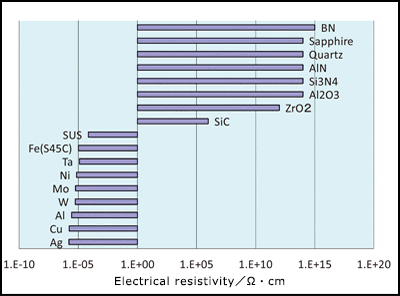Aluminas aluminum oxide al 2 o 3 are a commonly used technical ceramic with a range of high performance properties including excellent dielectric behavior.
Ceramics electrical resistivity.
Alumina 94 97 demonstrates high electrical resistivity and strength and low dielectric loss.
Lanthanum yttrium barium copper oxide ceramic may be superconducting at temperature as high as 138 k.
The si unit of electrical resistivity is the ohm metre and corresponds to the resistance measurement of a test piece of a given cross section and length.
On the other hand sic ceramics with added b and al had electrical resistivities of 2 10 and 0 8 cm respectively.
Despite of very low electrical conductivity of most of the ceramic materials there are ceramics possessing superconductivity properties near to zero electric resistivity.
Sic ceramics with added be had an extremely high electrical resistivity of 3 10 12 cm.
In addition to the well known physical properties of ceramic materials hardness compressive strength brittleness there is the property of electric resistivity most ceramics resist the flow of electric current and for this reason ceramic materials such as.
Conductive ceramics advanced industrial materials that owing to modifications in their structure serve as electrical conductors.
High purity alumina advanced ceramics 94 have the highest resistivity values 1 10 14 followed by aluminium nitride 1 10 12 sintered silicon nitride 1 10 10 and zirconia 1.
The differences in the electrical resistivity of the dense sic ceramics were considered to be due to different solubilities of the.
Alumina 99 9 100 has exceptionally low dielectric loss.










